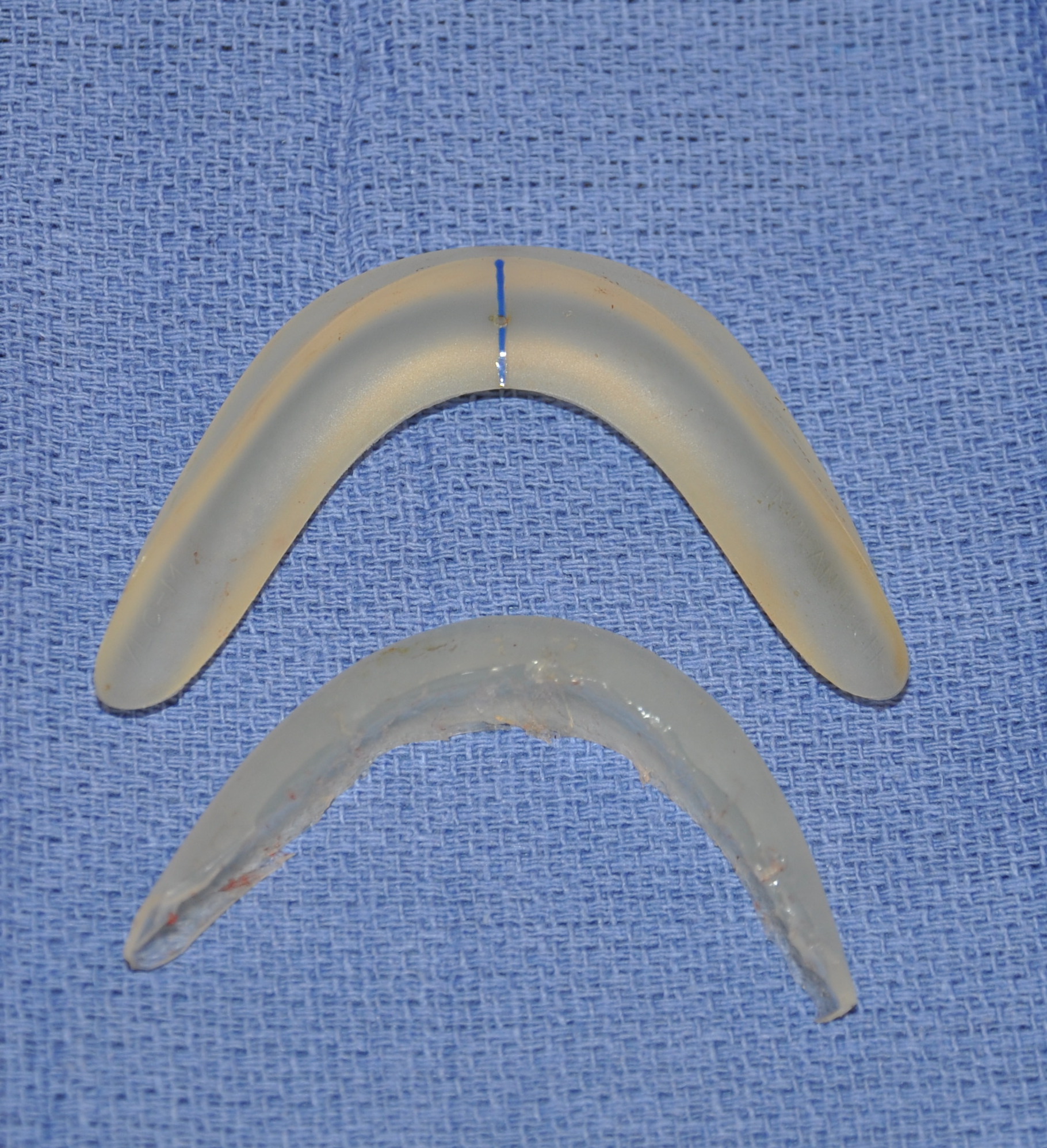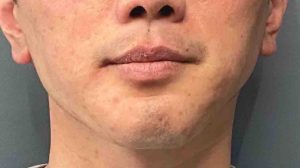Background: While the most common chin augmentation change is in the horizontal dimension, there are occasional needs for a vertical increase as well. Such vertical increases are often an accompanying change with a horizontal augmentation and usually are of a lesser movement. There are, however, patients whose chin argumentation needs are dominated by the vertical increase, either done alone or in combination with a lesser horizontal increase.
In vertical chin lengthening the two treatment approaches are actual lengthening of the bone (osteotomy) and the use of an implant. Each has their advantages and disadvantages but what really separates them lies in what they are capable of achieving in vertical length. For small to moderate vertical increases an implant can work as long as the overlying soft tissue can stretch to accommodate it. (this usually is in the 5 to 7mm range). When larger vertical increases are needed a vertical lengthening osteotomy is more effective and safer as it does not have the same soft tissue stretch limitations.

Case Study: This male had a rounder asymmetric face and desired a chin augmentation effect that lengthened the chin as well as help his facial asymmetry. (shorter left side of his face) While a custom chin implant was the best treatment approach he opted to see what could be done using a standard chin implant.


As a general rule trying to take any standard chin implant and make an effective result when multiple dimensional movements are needed beyond just a traditional horizontal augmentation effect does not usually produce a satisfying aesthetic result. This is magnified with an asymmetry is also present. This is precisely the indication for a custom chin implant. But for economic reasons a patient may want to try a modified standard chin implant approach which is not unreasonable as long as the patient is aware of its limitations.
Case Highlights:
1) Vertical chin lengthening can be done by an osteotomy or implant.
2) The vertical lengthening chin implant is best reserved for when small amounts of chin elongation are desired.
3) The vertical lengthening chin implant can be placed intraorally and can be intraoperatively modified to create some necessary shape changes.
Dr. Barry Eppley
Indianapolis, Indiana








